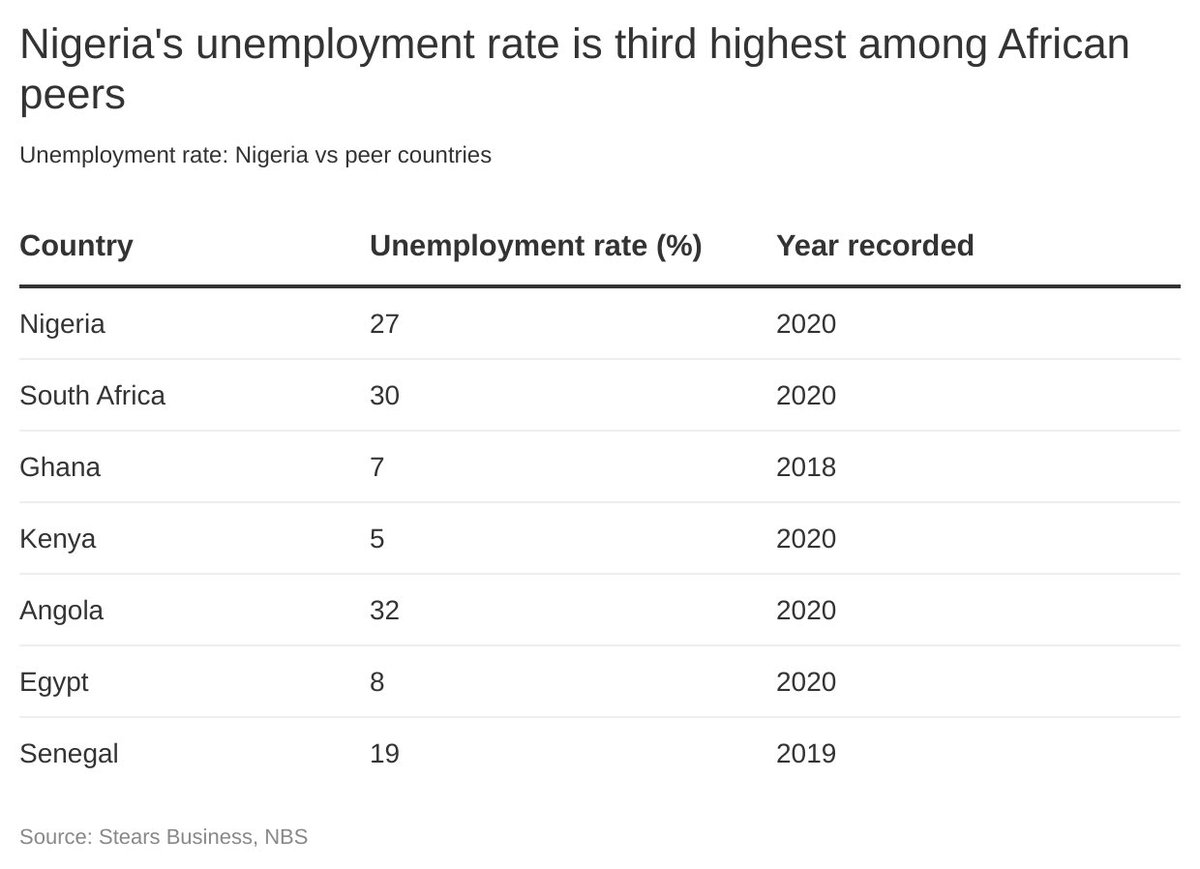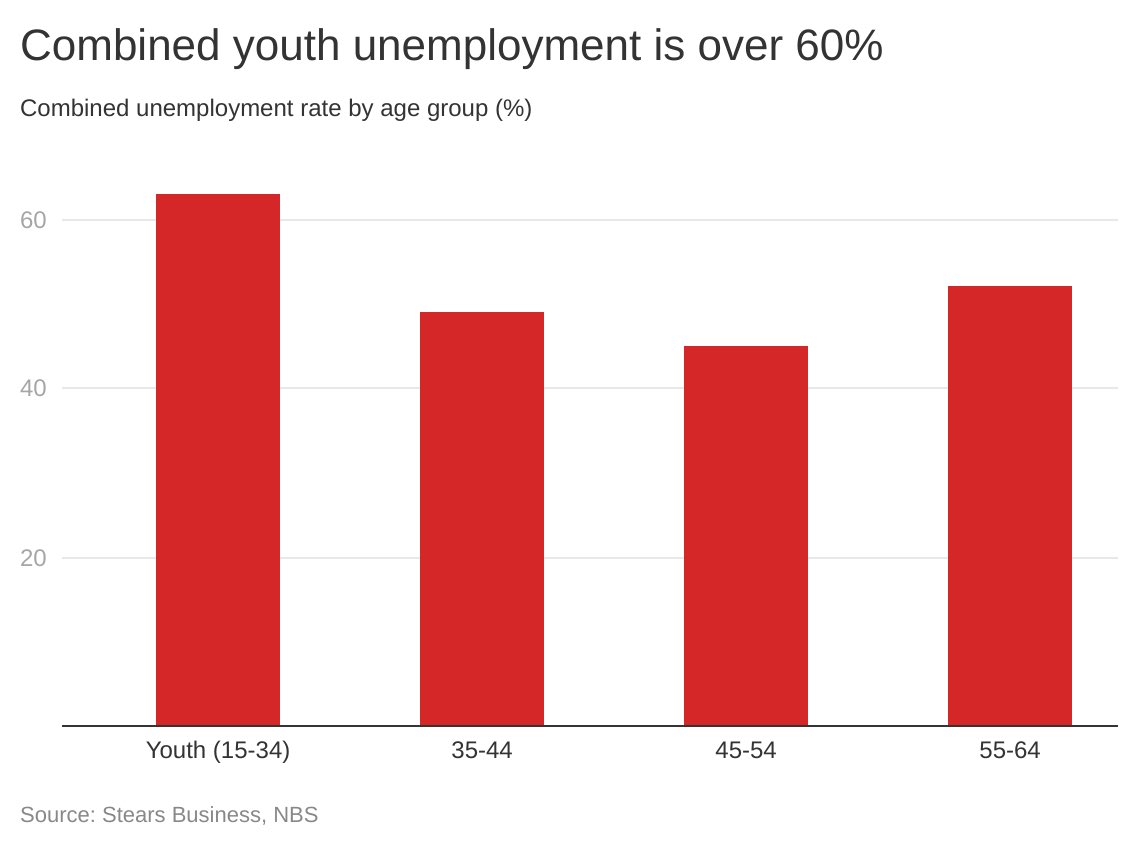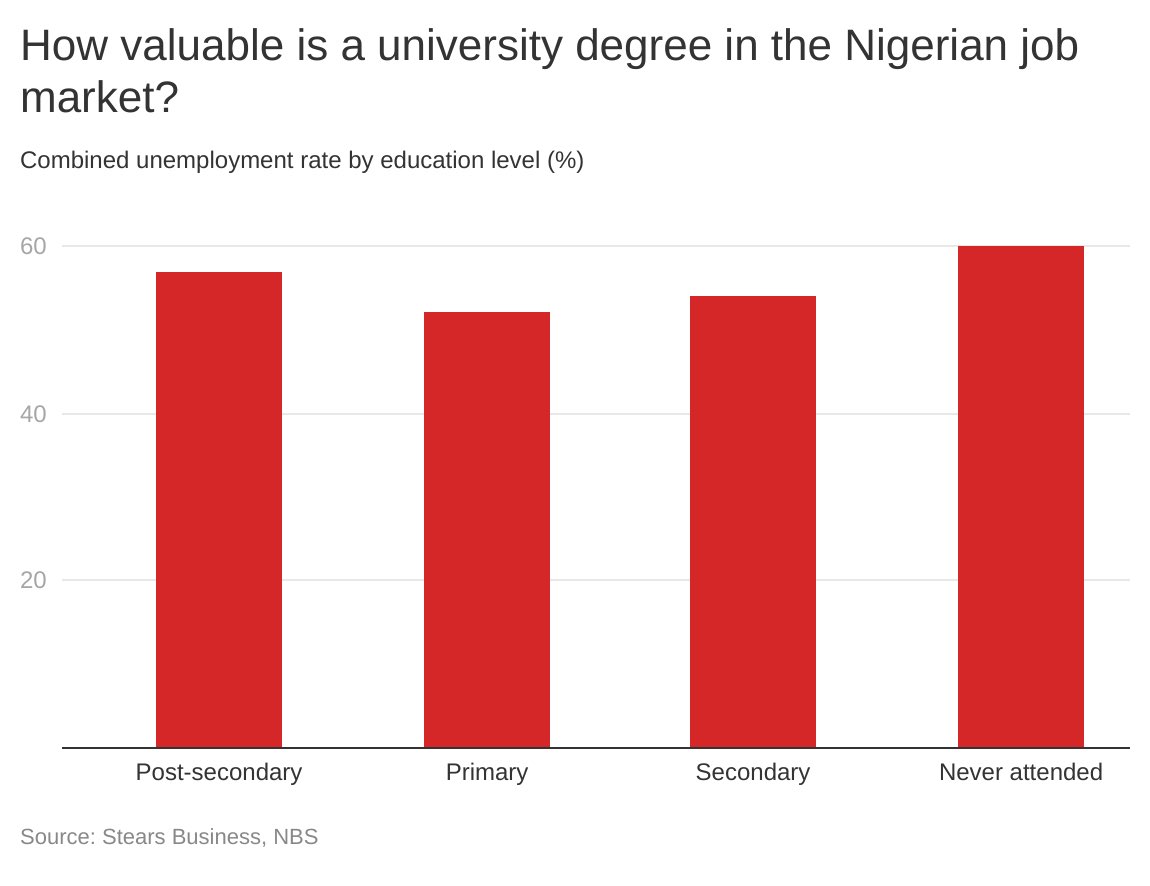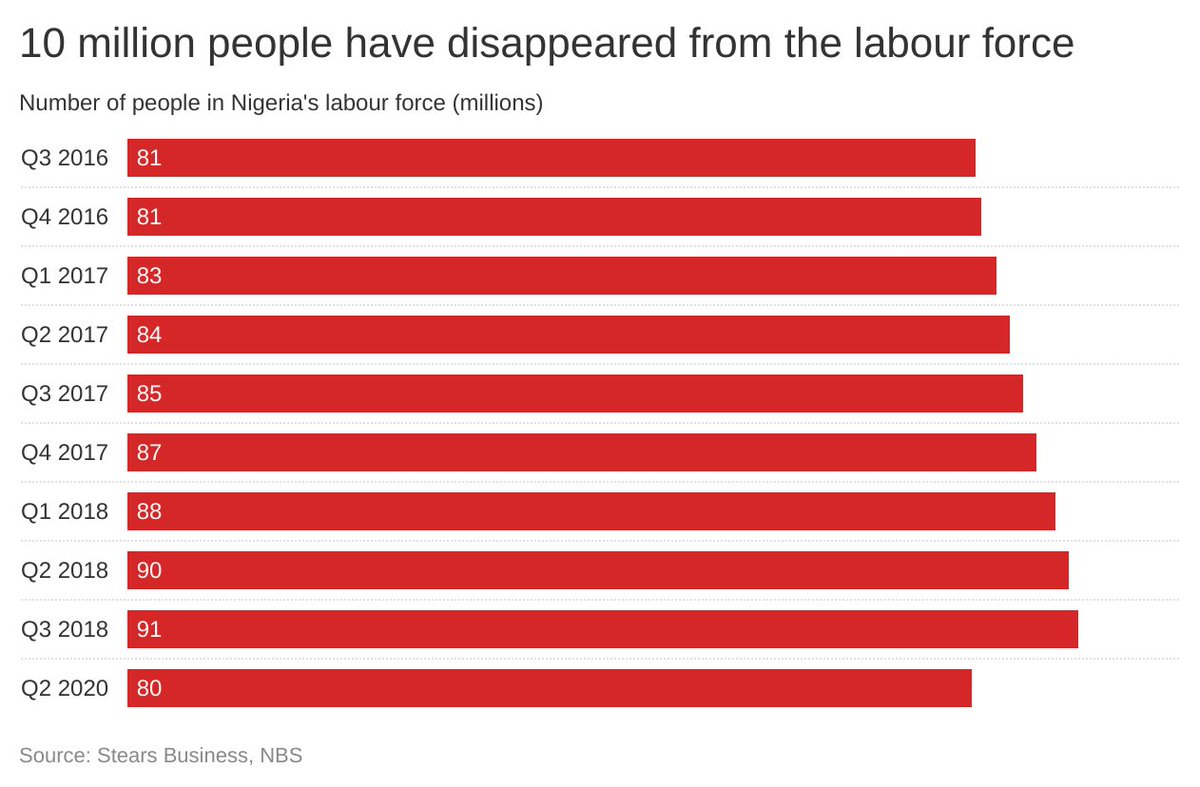Unsurprisingly, unemployment is up.
The report has now been deleted, but here is what we found:
1/25
PART I
2/25
3/25
5/25
6/25
7/25
8/25
9/25
10/25
12/25
13/25
14/25
16/25
17/25
19/25
20/25
Sorry, we have actually saved the scariest news for the end. Brace yourselves.
21/25
22/25
23/25
24/25
25/25
The same goes for the employment rate. A labour force of 100 people with 60 people employed would have an employment rate of 60%.
1/12
2/12
The answer is that these are people that were in full employment in 2018 but are now no longer recorded at all.
4/12
6/12
7/12
8/12
9/12
10/12
11/12
12/12
stearsng.com/article/how-to…








